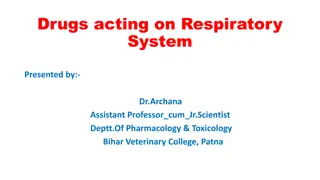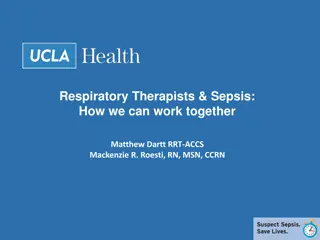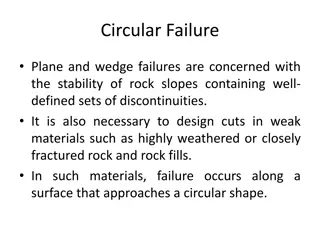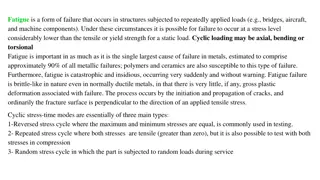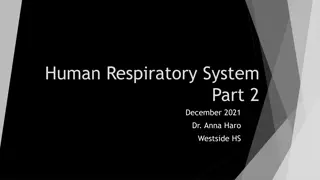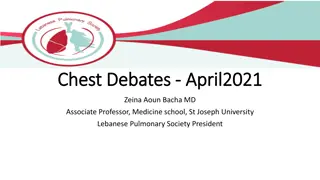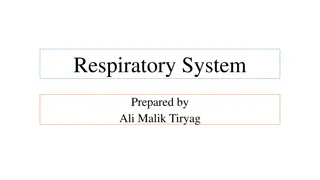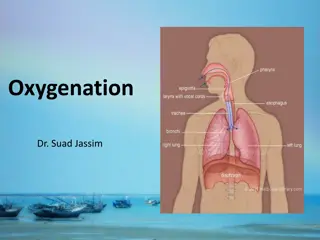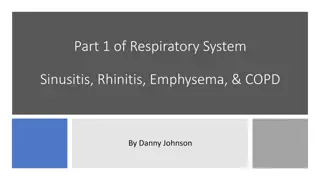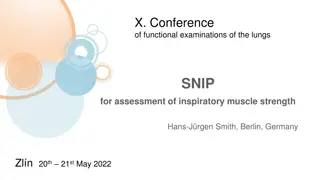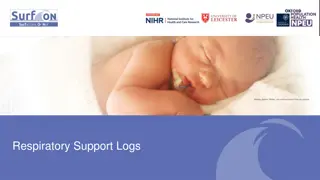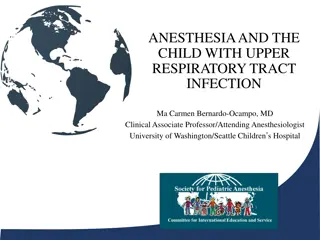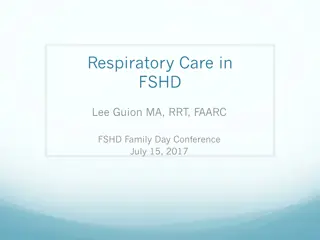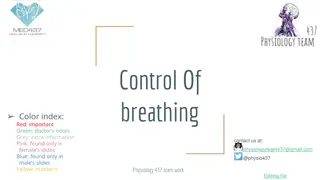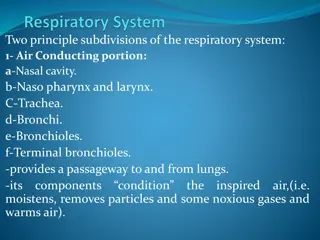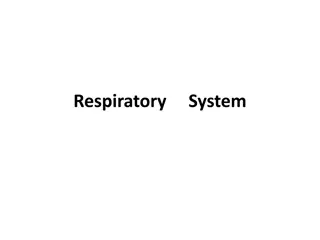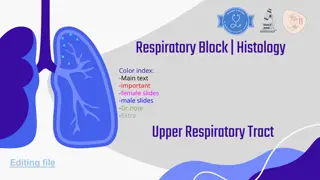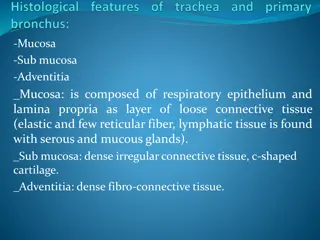Respiratory Failure
Respiratory failure in lungs leads to abnormal oxygen and carbon dioxide levels. Learn the types, causes, and management in this informative lecture from the University of Basra's AL-Zahraa College of Medicine and Ministry of Higher Education and Scientific Research.
Download Presentation

Please find below an Image/Link to download the presentation.
The content on the website is provided AS IS for your information and personal use only. It may not be sold, licensed, or shared on other websites without obtaining consent from the author.If you encounter any issues during the download, it is possible that the publisher has removed the file from their server.
You are allowed to download the files provided on this website for personal or commercial use, subject to the condition that they are used lawfully. All files are the property of their respective owners.
The content on the website is provided AS IS for your information and personal use only. It may not be sold, licensed, or shared on other websites without obtaining consent from the author.
E N D
Presentation Transcript
University of Basrah AL-Zahraa College of Medicine Ministry of higher Education and Scientific Research Cardiorespiratory Care Block Lecture title: respiratory failure Date: 6/2/2022 Dr. Mohammed Adil CRC Block Staff: Dr Firas Rashid Sayil (block leader) Dr Nawal Mustafa Dr Zainab Almnaseer Dr Farqad Alhamdani Dr Ban M. Saleh Dr Amani Namaa Dr. Mohammed Adil Dr Assad Hassan Dr Ahmed Qassim Dr Safa Asaad Dr Mustafa Ghazi Dr Ilham Mohammed Dr Zainab Muzahim Dr. Ahmed Bader References as in the workbook and classroom. For more detailed instruction, any question, cases need help please contact block leader at the CRC Google classroom or email.
University of Basra AL-Zahraa College of Medicine Ministry of higher Education and Scientific Research Learning objective: By the end of lecture you should know: 1- what is meant by respiratory failure 2- the difference between the two types of respiratory failure 3- common causes of both types 4- the headline management of both types in the difference in the management
University of Basra AL-Zahraa College of Medicine Ministry of higher Education and Scientific Research Respiratory failure: The term respiratoryfailure is used when pulmonary gas exchange fails to maintain normal arterial oxygen and carbon dioxide levels. Its classification into types I and II is defined by the absence or presence of hypercapnia (raised PaCO2).
University of Basra AL-Zahraa College of Medicine Ministry of higher Education and Scientific Research Pathophysiology: When disease impairs ventilation of part of a lung (e.g. in asthma or pneumonia), perfusion of that region results in hypoxic and CO2- laden blood entering the pulmonary veins. Increased ventilation of neighbouring regions of normal lung can increase CO2 excretion, correcting arterial CO2 to normal, but cannot augment oxygen uptake because the haemoglobin flowing through these normal regions is already fully saturated.
University of Basra AL-Zahraa College of Medicine Ministry of higher Education and Scientific Research Admixture of blood from the under-ventilated and normal regions thus results in hypoxia with normocapnia, which is called type I respiratory failure. Diseases causing this include all those that impair ventilation locally with sparing of other regions such as Acute asthma pulmonary oedema pneumonia lobar collapse pneumothorax.
University of Basra AL-Zahraa College of Medicine Ministry of higher Education and Scientific Research Arterial hypoxia with hypercapnia (type II respiratory failure) is seen in conditions that cause generalised, severe ventilation perfusion mismatch, leaving insufficient normal lung to correct PaCO2, or any disease that reduces total ventilation. This typre of respiratory failure caused not only by diseases of the lung but also disorders affecting any part of the neuromuscular mechanism of ventilation
University of Basra AL-Zahraa College of Medicine Ministry of higher Education and Scientific Research Type 1 vs type 2 respiratory failure
University of Basra AL-Zahraa College of Medicine Ministry of higher Education and Scientific Research Management of acute respiratory failure Prompt diagnosis and management of the underlying cause is crucial. In type I respiratory failure, high concentrations of oxygen (40 60% by mask) will usually relieve hypoxia by increasing the alveolar PO2 in poorly ventilated lung units. Occasionally, however (e.g. severe pneumonia affecting several lobes), mechanical ventilation may be needed to relieve hypoxia. Patients who need high concentrations of oxygen for more than a few hours should receive humidified oxygen.
University of Basra AL-Zahraa College of Medicine Ministry of higher Education and Scientific Research Acute type II respiratory failure is an emergency requiring immediate intervention. It is useful to distinguish between patients with high ventilatory drive (rapid respiratory rate and accessory muscle recruitment) who cannot move sufficient air, and those with reduced or inadequate respiratory effort, In the former, particularly if inspiratory stridor is present, acute upper airway obstruction from foreign body inhalation or laryngeal obstruction (angioedema, carcinoma or vocal cord paralysis) must be considered, as the Heimlich manoeuvre immediate intubation or emergency tracheostomy may be life-saving.
University of Basra AL-Zahraa College of Medicine Ministry of higher Education and Scientific Research More commonly, the problem is in the lungs, with severe generalised bronchial obstruction from COPD or asthma, acute respiratory distress syndrome (ARDS) arising from a variety of Insults. In all such cases, high-concentration (e.g. 60%) oxygen should be administered, pending a rapid examination of the respiratory system and measurement of arterial blood gases. A small percentage of patients with severe chronic COPD and type II respiratory failure develop abnormal tolerance to raised PaCO2 and may become dependent on hypoxic drive to breathe. In these patients only, lower concentrations of oxygen (24 28% by Venturi mask) should be used to avoid precipitating worsening respiratory depression.
University of Basra AL-Zahraa College of Medicine Ministry of higher Education and Scientific Research Patients with acute type II respiratory failure who have reduced drive or conscious level may be suffering from sedative poisoning, CO2 narcosis or a primary failure of neurological drive (e.g. following intracerebral haemorrhage or head injury). History from a witness may be invaluable, and reversal of specific drugs with (for example) opiate antagonists is occasionally successful, but should not delay intubation and supported mechanical ventilation in appropriate cases.
University of Basra AL-Zahraa College of Medicine Ministry of higher Education and Scientific Research Chronic and acute on chronic type II respiratory failure The most common cause of chronic type II respiratory failure is severe COPD. Although PaCO2 may be persistently raised, there is no persisting acidaemia because the kidneys retain bicarbonate, correcting arterial pH to normal. This compensated pattern, which may also occur in chronic neuromuscular disease or kyphoscoliosis, is maintained until there is a further acute illness such as an exacerbation of COPD that precipitates an episode of acute on chronic respiratory failure, with acidaemia and initial respiratory distress followed by drowsiness and eventually coma.
University of Basra AL-Zahraa College of Medicine Ministry of higher Education and Scientific Research These patients have lost their chemo sensitivity to elevated PaCO2, and so they may paradoxically depend on hypoxia for respiratory drive and are at risk of respiratory depression if given high concentrations of oxygen, e.g. during ambulance transfers or in emergency departments. in contrast to acute severe asthma, some patients with acute on chronic type II respiratory failure due to COPD may not appear distressed, despite being critically ill so physical examination is of value in looking for physical sign of CO2 retention
University of Basra AL-Zahraa College of Medicine Ministry of higher Education and Scientific Research Management of chronic acute on chronic respiratory failure.
University of Basra AL-Zahraa College of Medicine Ministry of higher Education and Scientific Research Thank you



